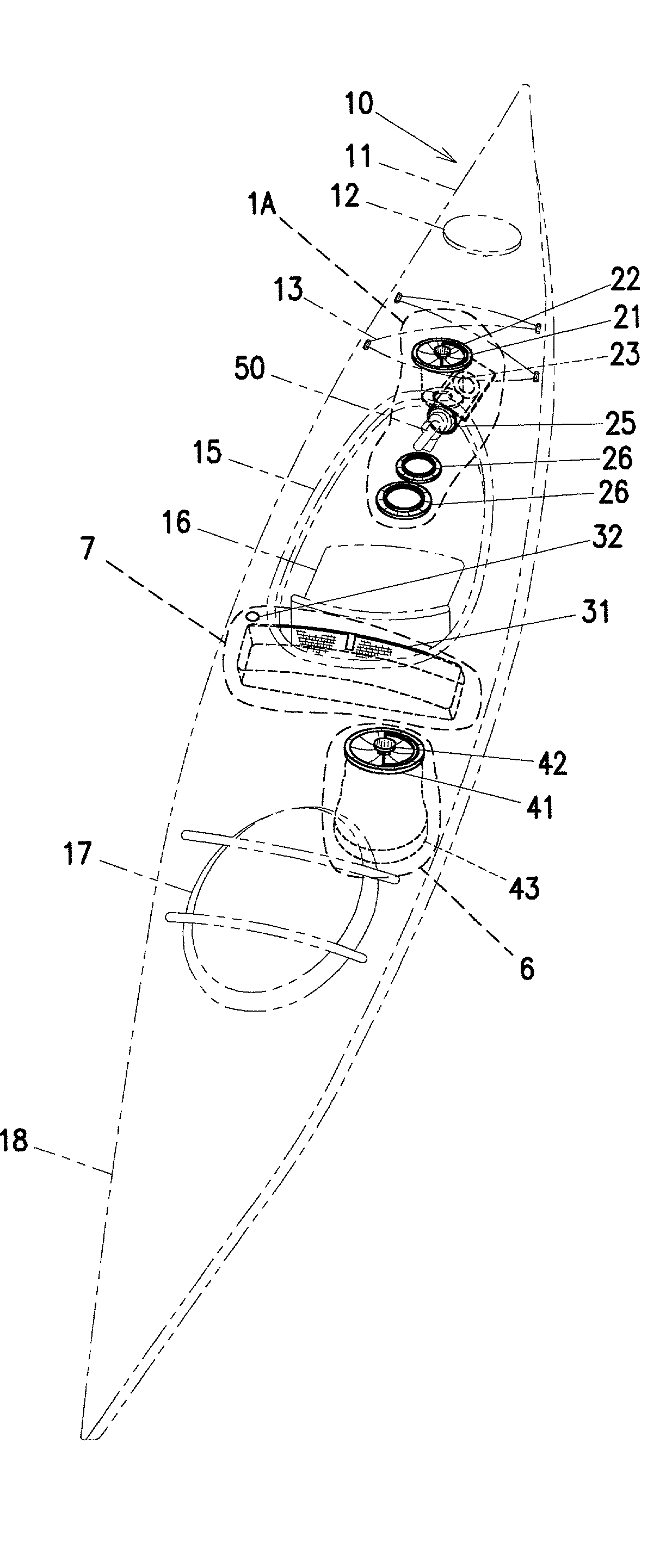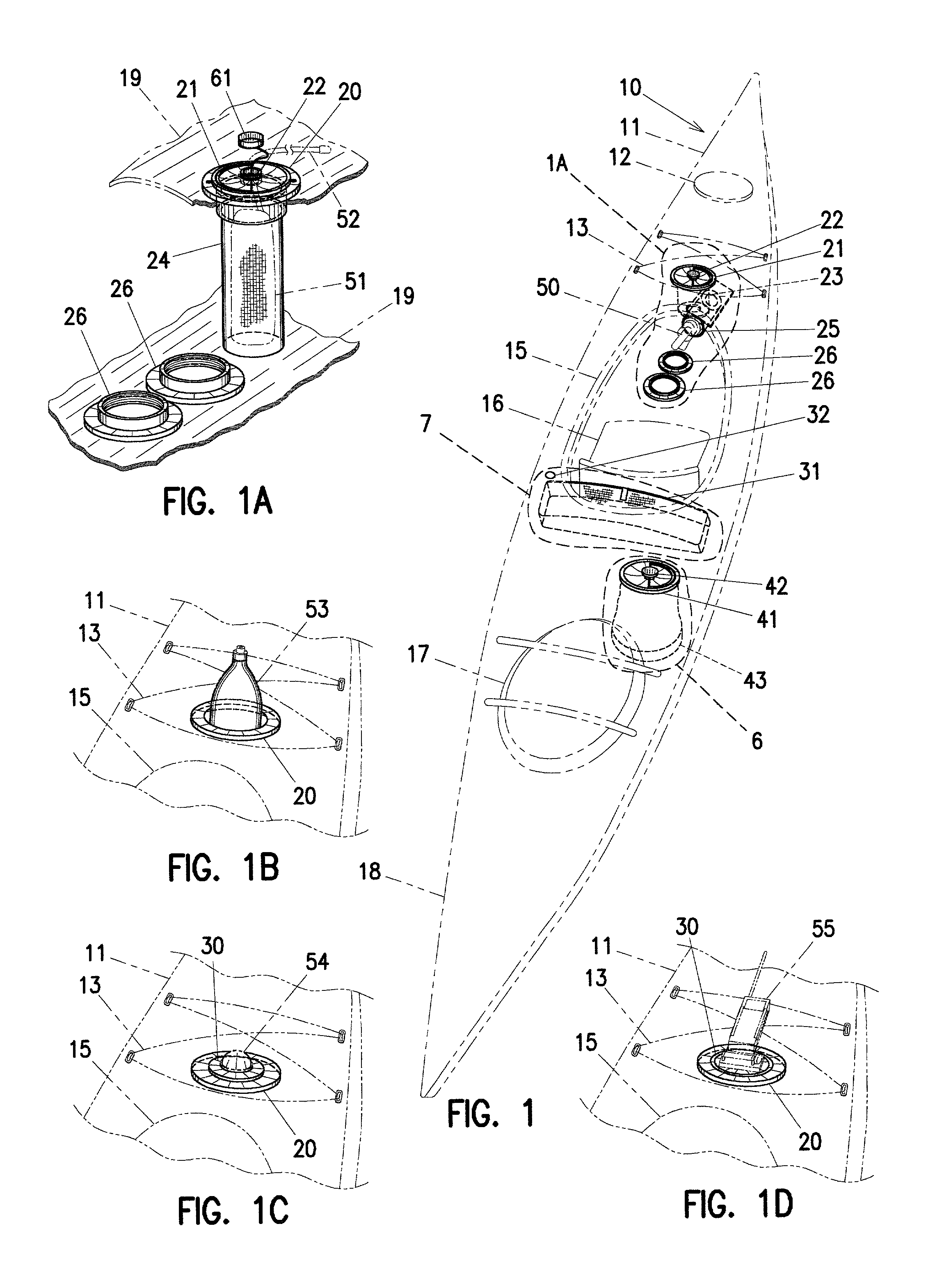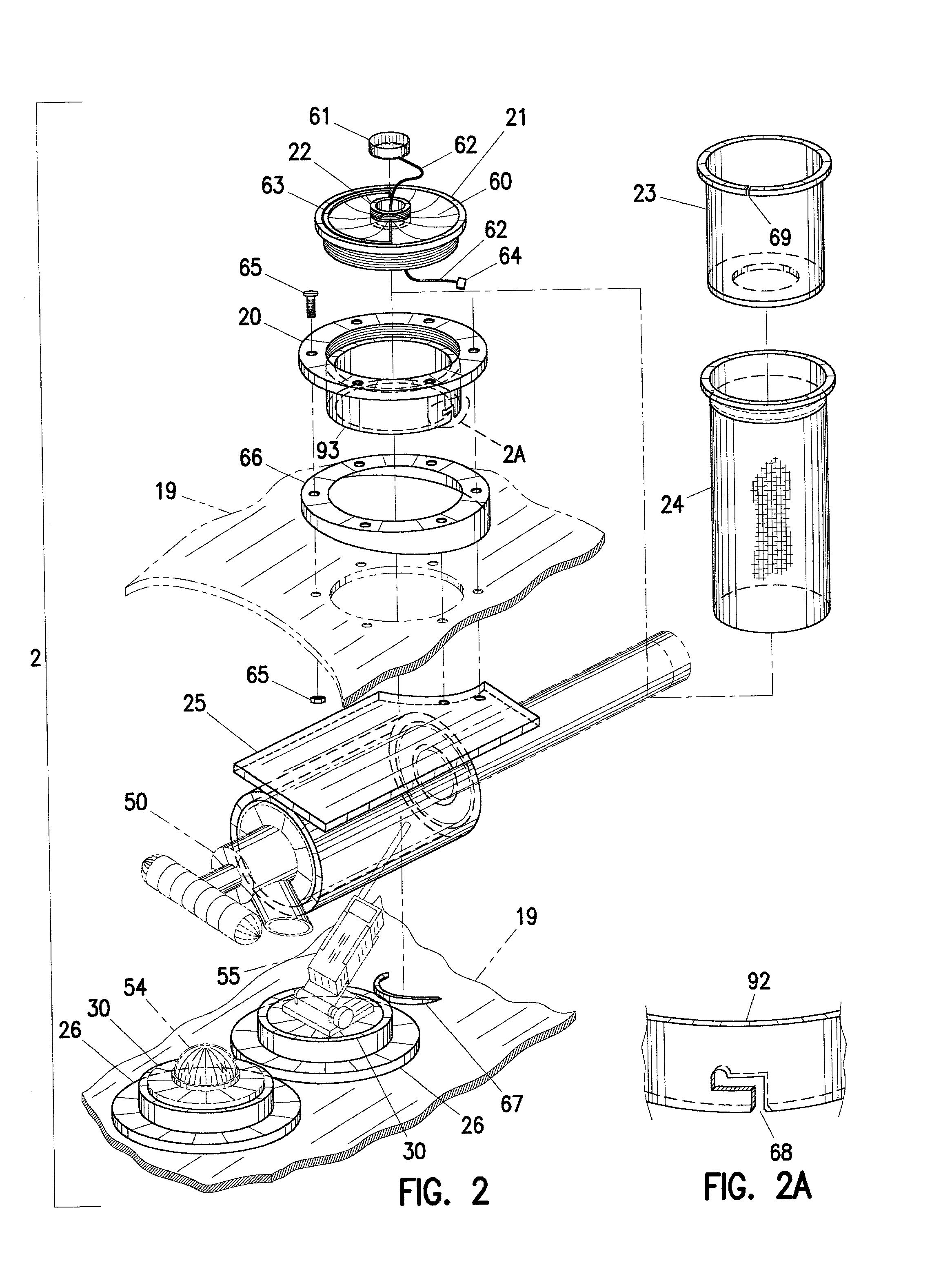Sea kayakers and those using large inland water bodies, are frequently exposed to dense
fog and storms.
The most common problem in skirted
cockpit closed hull watercraft such as kayaks, is that manual pumping of the flooded hull requires at least partial removal of the spray skirt to insert the pump into the hull.
This compromises safety since in
severe weather,
storm water may enter through the skirt opening faster than it can be removed with the pump.
None have reservoir containment products tailored to the personal watercraft industry where the containment is installed and carried within the craft hulls.
The conventional backpack reservoir results in avoidable stress for paddlers and interferes with nominal paddling
torso rotation.
The backpack configuration raises the paddler's center of gravity and reduces watercraft roll stability.
The backpack configuration conflicts with most PFD flotation devices worn by personal watercraft boaters.
The backpack style gear also presents added risks of entanglement with watercraft appurtenances during self rescue operations.
None of the kayak industry manufacturers provide internal or external features that accommodate the popular flexible reservoir hydration systems with attached flexible drinking tubes, such as used by practitioners of other outdoor sports.
None feature hull port openings for routing these drinking tubes or associated methods of sealing such openings.
These depressions are an inch or less in depth and provide inadequate container stability.
Further, they
expose virtually the whole container to sun and weather such that content temperatures are unmanaged.
None are designed to be integrated in a concentric installation within a
system of hatch fitting safety accessories.
None have companion storage options.
None have internal non slip surface treatment to better secure beverage containers.
The position of this installation precludes practical concurrent use of a foredeck access hatch with or without an accessory
system, significantly obstructs popular
deck bags, fully exposes the beverages to sun and weather, and has no integrated system for the internal hull storage of the beverages.
Larger containers are poorly served or not compatible.
In every case, these are situated forward of the kayaker to enable viewing the
compass, however, they are all too far forward for
physical access by the kayaker while underway.
None feature alternate storage for the compasses and none are designed to accommodate other kayaker accessible accessories.
The accessory bags are all water pervious and therefore provide no protection for contents from
bilge water.
These depressions are shallow and are difficult to use with cold fingers and or gloved hands.
None provide alternate covers accommodating internal hydration reservoirs or integral ports for access and sealing of flexible king tubes attached to these reservoirs.
None feature screw or other covers adapted to serve hydration, navigation, communication, or manual pump operation.
None of the available screw in hatch covers are fitted with tethers and therefore they are easily lost overboard.
In
storm and rough water conditions, loss of a hatch cover may result in swamping the watercraft and possible capsize.
None include hatch covers with convenient D shaped handles that facilitate use with cold and or gloved hands.
None include waterproof internal storage bags which protect the contents from
exposure to
bilge water.
The non-horizontal forward installations provide no suitably level platform for popular liquid filled marine compasses.
None of the forward position installations include features for mounting supplemental accessories or facilitation for hydration systems such as enhanced beverage container use or internal reservoir class hydration systems with flexible extended drinking tubes and the related hatch cover port modifications necessary to pass and seal these flexible drinking tubes or tether the port caps.
None feature internal waterproof storage bags.
None feature hinged supplemental tops allowing internal storage access for the screw covers or other potential accessory adapters sized to screw in the threaded hatches.
It cannot accommodate common portable manual pumps, nor provide in hull storage for these pumps.
It does not accommodate integrated hydration system components such as a beverage holder or flexible reservoir and draft tube.
It cannot accept or store navigation and communication accessories.
The size of the
compass is limited by the integration into the pump
handle.
It is not practically removable, storable, nor does the size deliver the standard of accuracy established in the personal watercraft industry.
The complex pump system and repair parts are not commonly available.
Storage under foredeck elastics is accessible, however it is not as secure as in hull storage and uses space needed for storage and other accessories.
 Login to View More
Login to View More  Login to View More
Login to View More 


